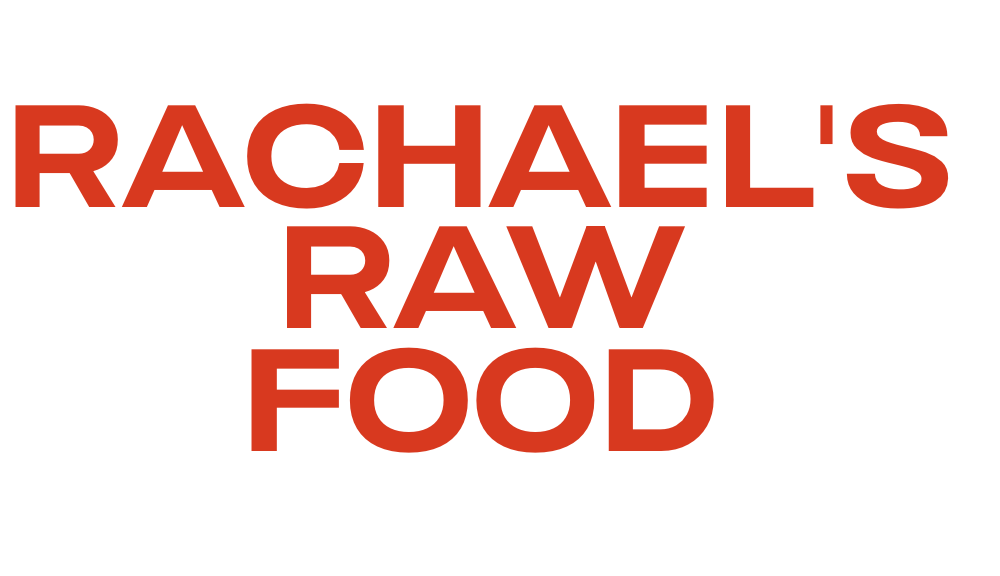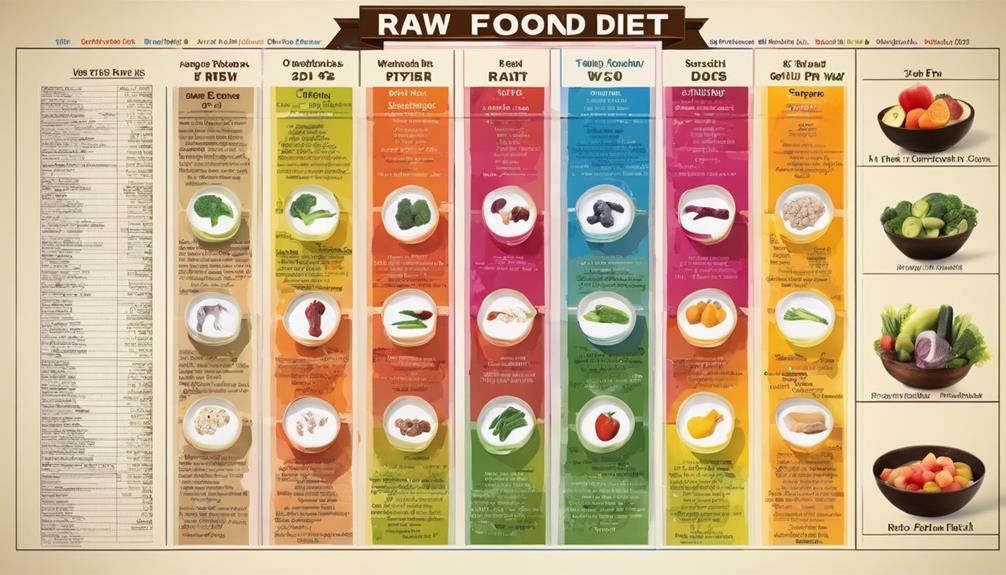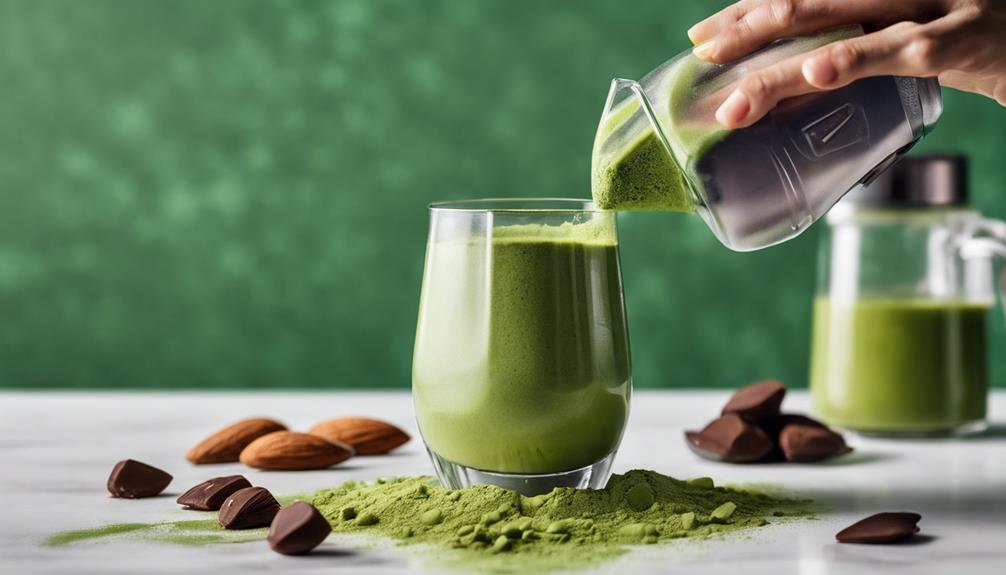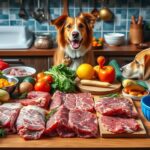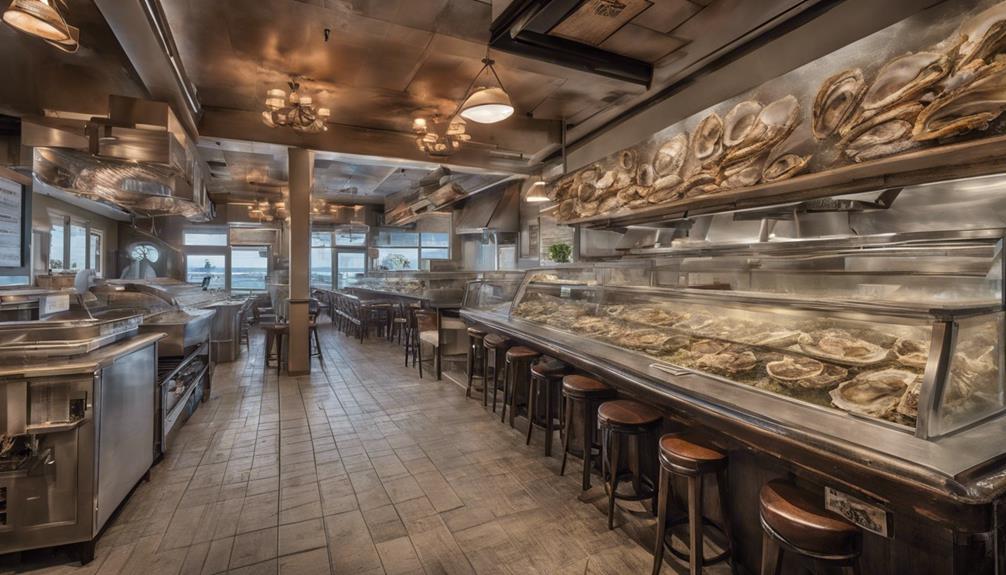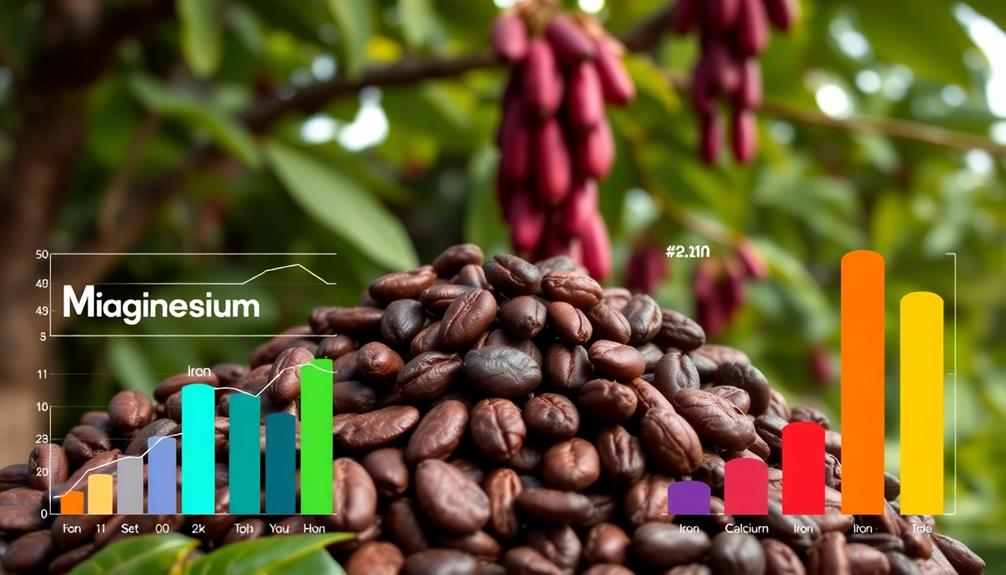Switching to a raw food diet has numerous benefits for dogs, including improved digestion, healthier skin and coat, weight control, dental health, and overall well-being. It is important to slowly introduce the new diet, starting with a mixture of 80% current food and 20% raw food over a period of 7-10 days. A raw diet usually includes raw meat, bones, organs, vegetables, fruits, and supplements to ensure a well-rounded nutrition.
Maintaining a balanced nutrient intake is essential for supporting your dog's health, immune function, energy levels, and overall organ and muscle health. By following guidelines, monitoring their progress, and adjusting their diet as needed, you can provide your dog with a diet that mimics what they would eat in the wild, promoting their best health and wellness.
Key Takeaways
- Gradually transition to raw diet over 7-10 days.
- Include raw meat, bones, organs, vegetables, fruits, and supplements.
- Monitor weight, stool, and energy levels for adjustments.
- Thaw raw dog food in the refrigerator for freshness.
- Consult with a veterinarian for guidance and support.
Benefits of Raw Food Diet for Dogs
Switching to a raw food diet can bring numerous benefits for dogs, promoting better digestion, healthier skin and coat, and improved overall well-being.
Feeding dogs a raw food diet supports weight control, as it provides essential nutrients without the excess fillers found in some commercial pet foods. This helps maintain a healthier body condition and can prevent obesity-related issues.
Additionally, the dental health of dogs noticeably improves with a raw diet, reducing plaque buildup and supporting stronger teeth. The immune system also receives a boost, enhancing overall health and vitality.
Furthermore, nutrient absorption is optimized, leading to smaller, firmer stools, indicating improved digestion. The benefits of a raw food diet extend beyond just physical appearance; they contribute to the holistic well-being of our furry companions.
Transitioning to Raw Diet Safely
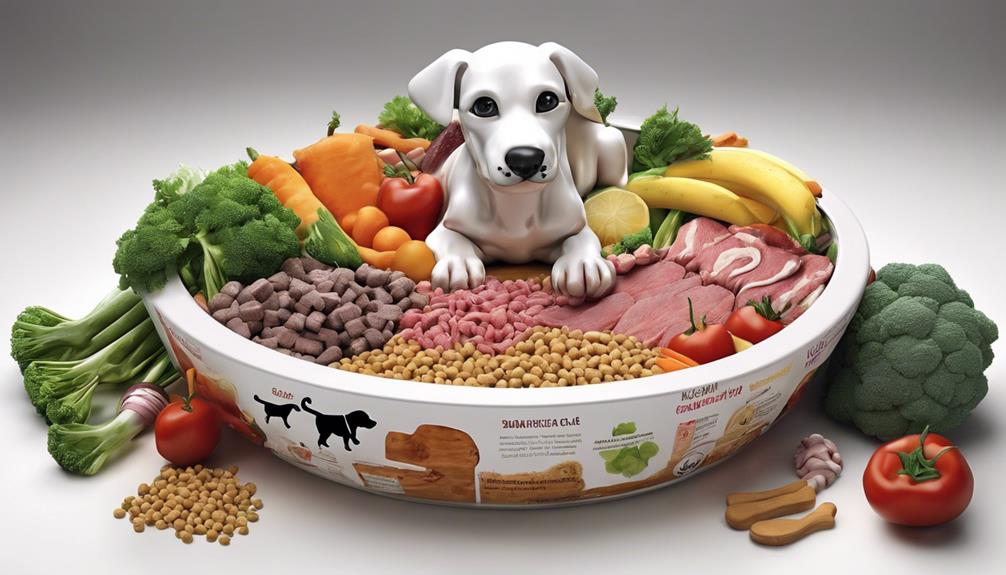
When switching your dog to a raw diet, it's important to do so gradually over 7-10 days to avoid digestive issues.
Start with a blend of 80% current diet and 20% raw food, increasing the raw food portion daily.
Keep a close eye on your dog's health and stools throughout this period for any changes.
Safety Tips for Transition
During the switch to a raw diet for your dog, it's important to gradually introduce the new food over a period of 7-10 days to avoid digestive issues. Start by incorporating 80% of your dog's current diet with 20% raw food, then gradually increase the raw food portion.
Keep a close eye on your dog's stool consistency to make sure they're adjusting well to the change. Also, monitor changes in their energy levels and coat condition throughout this period.
If you have any concerns or questions, don't hesitate to consult with a veterinarian or nutritionist for guidance on safely shifting your dog to a raw diet. Your furry friend's health is a top priority, so taking these safety tips into account is essential for a successful switch.
Monitoring Health Changes
To effectively monitor your dog's health changes while shifting to a raw diet, observe for any alterations in their stool consistency and frequency. During this shift, it's essential to pay close attention to your dog's well-being.
Here are three key points to keep in mind:
- Look for improvements in skin conditions, coat quality, and overall energy levels as signs of a successful shift to a raw diet.
- Keep track of any digestive issues like vomiting or diarrhea that may indicate a need for dietary adjustments.
- Watch for weight changes to guarantee your dog maintains a healthy body condition throughout the shift process.
Remember to schedule regular veterinary check-ups to assess your dog's health and guarantee the raw diet meets their nutritional needs.
Components of a Raw Food Diet
In creating a raw food diet for dogs, the components play a vital role in guaranteeing excellent nutrition and health benefits. A raw food diet typically includes raw meat, bones, organs, vegetables, fruits, and supplements. This diet aims to provide a balanced and complete dogs diet, mimicking what they'd eat in the wild.
By offering a species-appropriate diet, such as raw meat, dogs can benefit from improved digestion, healthier skin and coat, controlled body weight, and enhanced dental health. To guarantee a well-rounded nutritional profile, it's essential to include a proper balance of muscle meat, edible bones, and organs in their meals. These components provide essential nutrients that support overall pet nutrition.
Importance of Nutrient Balance
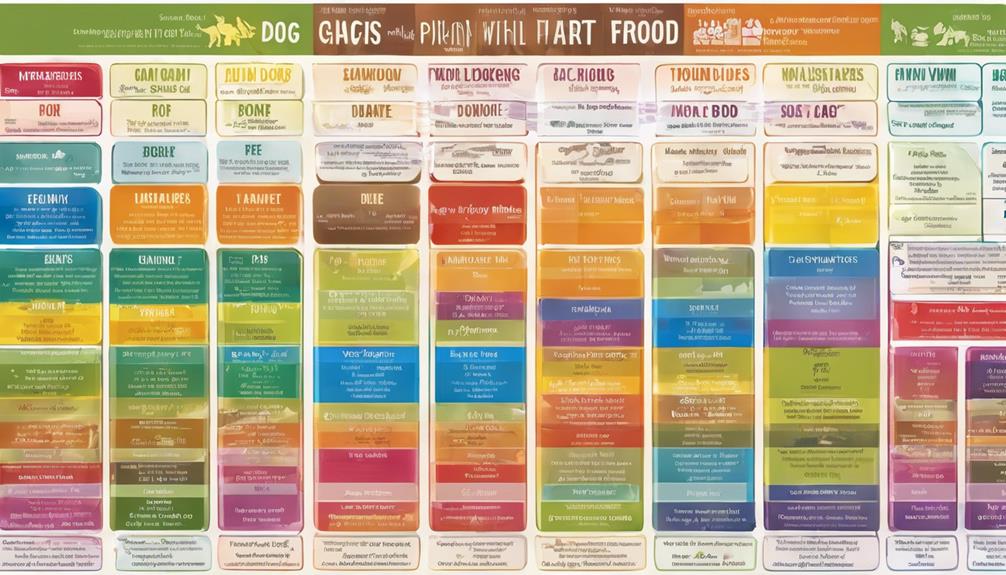
Maintaining proper nutrient balance in a raw food diet for dogs is essential for ensuring they receive all the necessary vitamins, minerals, and amino acids. Here are three key reasons why nutrient balance matters for your canine companion:
- Supports Overall Health: A balanced intake of vitamins, minerals, and amino acids is vital for your dog's overall health. Nutrient-rich foods help in maintaining healthy organs, bones, and muscles, keeping your furry friend in top shape.
- Boosts Immune Function: The right balance of nutrients plays an important role in supporting your dog's immune system. A strong immune system helps fend off illnesses and infections, keeping your pet healthy and happy.
- Sustains Energy Levels: Proper nutrient balance in a raw food diet provides the energy your dog needs for daily activities and play. It ensures your pup stays active, alert, and ready for all the adventures that come their way.
Guidelines for Feeding Raw Diet
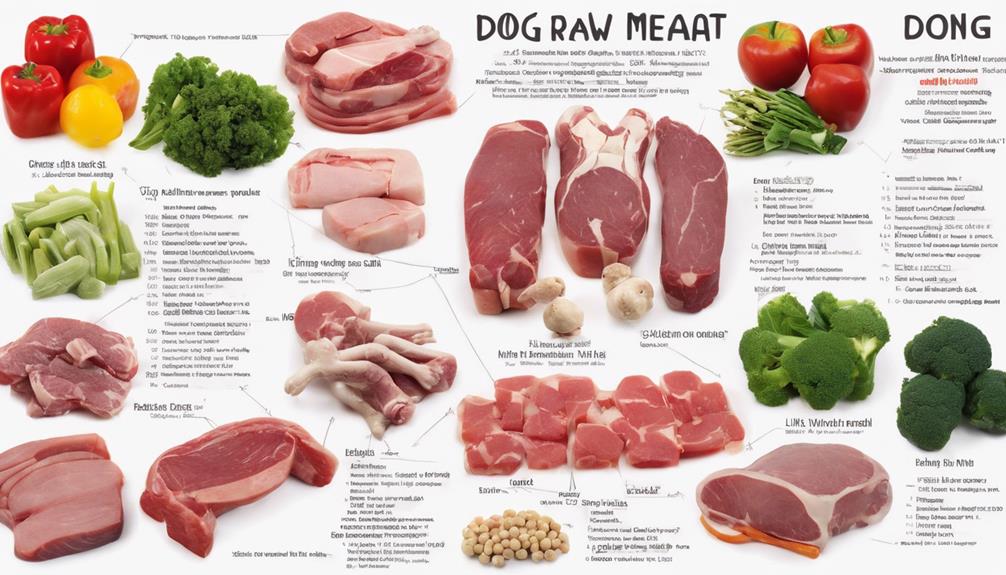
When introducing a raw diet to your dog, remember to slowly change by blending current food with raw food.
It's important to monitor weight, stool, and energy levels for smooth adjustment.
Dividing the daily raw food amount evenly across meals helps maintain nutritional balance.
Food Preparation Tips
Thaw your raw dog food in the refrigerator for up to 4 days to guarantee freshness and prevent spoilage. When preparing raw food for your furry friend, remember these essential tips:
- Follow Hygiene Practices: Maintain proper hygiene to prevent cross-contamination during raw food preparation.
- Estimate Daily Portions: Plan ahead by defrosting raw food and calculating daily portions based on your dog's weight and feeding schedule.
- Maintain Portion Control: Divide the daily amount of raw food equally among meals to promote balanced nutrition and portion control.
These guidelines will help you navigate the world of feeding raw, ensuring your dog receives a healthy and balanced raw dog food diet.
Transitioning to Raw
To guarantee a smooth shift to a raw diet for your dog, it's important to gradually introduce raw food into their meals over a period of 7-10 days. Begin with 80% of their current diet and 20% raw, slowly increasing the raw food proportion each day.
Keeping a close eye on your dog's stool consistency and overall health during this change period is vital. The goal is to shift to a 100% raw diet by the end of this timeframe.
For personalized guidance, it's advisable to consult with a veterinarian or nutritionist. These professionals can offer tailored advice to make sure your dog's health is monitored and that the shift to a raw diet is successful.
Raw Diet for Dogs: Common Myths
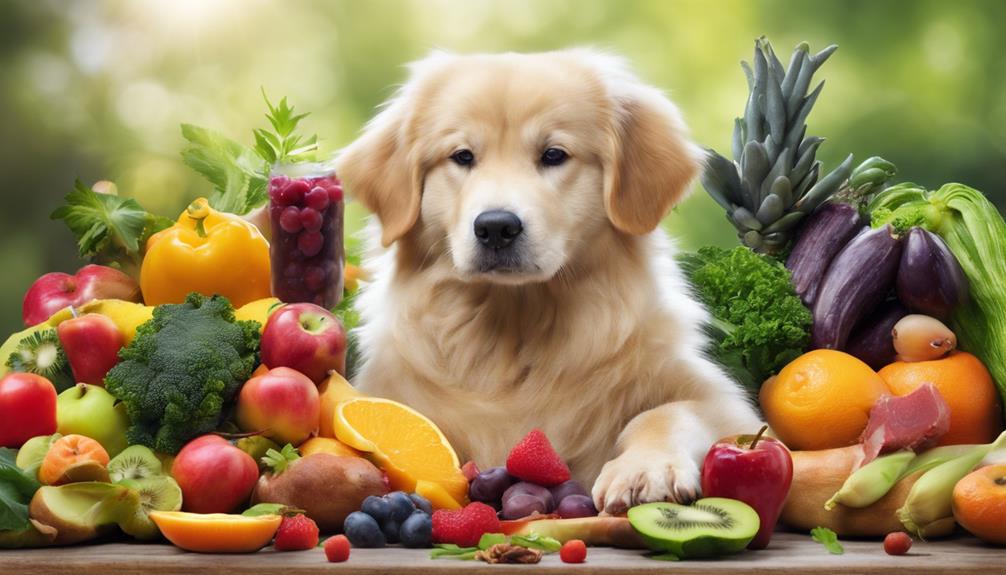
Contrary to popular belief, raw diets for dogs are safe and beneficial when handled and prepared correctly. Many myths surrounding raw dog food have caused confusion, but with proper understanding and implementation, feeding a balanced raw diet can be a great choice for your furry friend.
Here are some common myths debunked:
- Myth: Raw diets aren't safe due to bacteria – raw meat for dogs is safe when handled properly and sourced from reputable suppliers.
- Myth: Raw diets lack essential nutrients – raw diets can be nutritionally complete with the right balance of meat, bones, organs, and supplements.
- Myth: Raw diets are expensive – cost-effective options exist, and homemade raw diets can be tailored to fit budget constraints.
Monitoring Your Dogs Health Progress
Regular monitoring of your dog's health progress is essential when following a raw food diet. To make sure your pet is thriving on this diet, it's critical to keep a close eye on various indicators of their well-being. Here is a helpful table to guide you in monitoring your dog's health progress:
| Aspect to Monitor | What to Look For |
|---|---|
| Weight | Maintain a healthy body weight for your dog. |
| Energy Levels | Assess overall activity and vitality. |
| Coat & Skin Condition | Look for improvements in quality and condition. |
| Stool Consistency | Check for signs of good digestive health. |
| Veterinary Check-ups | Schedule regular visits to evaluate overall health. |
Raw Diet Chart for Puppies
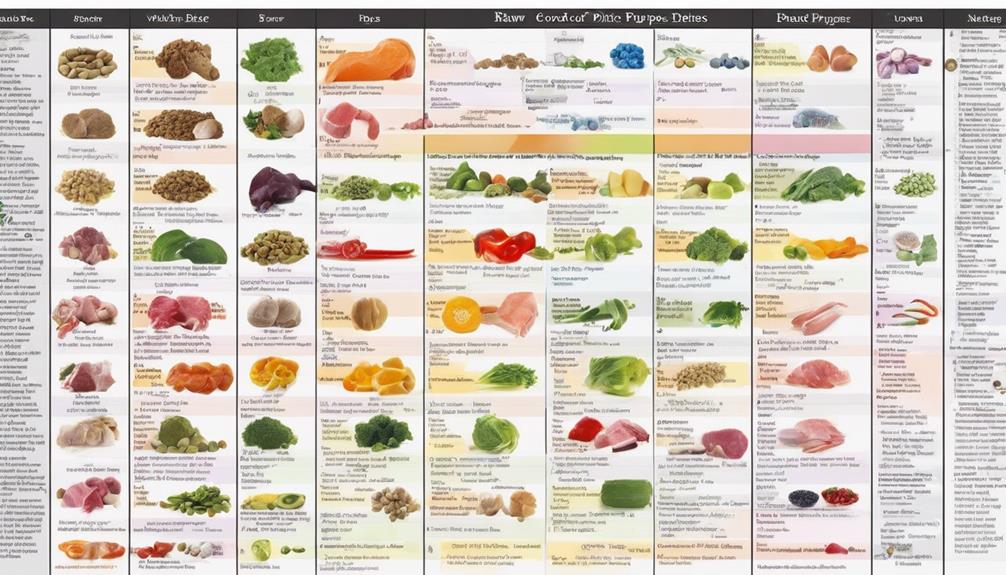
When pondering a raw diet chart for puppies, it's essential to ensure their nutritional needs are met for peak growth and development. Here are some key points to take into account:
- Puppies on raw diets require 2-3% of their body weight in food daily to support their growth and development effectively.
- Make sure to offer bone-in chicken quarters or thighs to meet their calcium and phosphorus needs, crucial for healthy bone formation.
- Integrate organ meats like liver into their diet as they're rich in essential nutrients vital for the puppy's overall health and well-being.
It is vital to balance muscle meat with edible bones and organs to provide a complete and balanced raw diet for your growing puppy. Regularly monitor your puppy's growth and development, adjusting their food amounts as needed to support their healthy progression towards adulthood.
Special Considerations for Senior Dogs
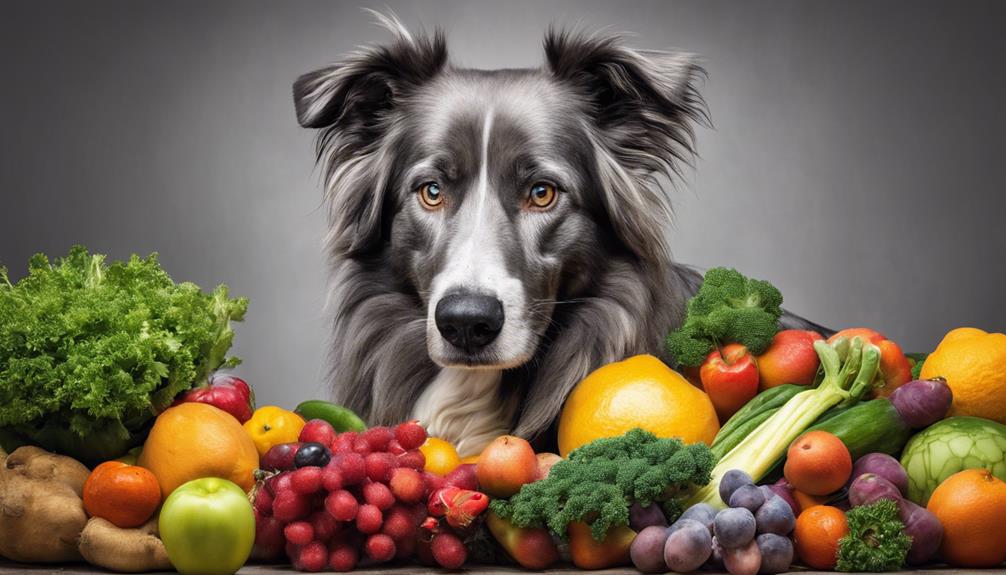
As senior dogs age, adjustments in their raw food diet become essential to cater to their reduced activity levels and metabolism. It's important to maintain adequate protein levels to support muscle mass and overall health in senior dogs.
Consider incorporating joint supplements like glucosamine and chondroitin to promote joint health and mobility. Senior dogs may benefit from softer textures or smaller portion sizes to aid digestion, as their systems may not be as critical as when they were younger.
Regular veterinary check-ups are a must for senior dogs on a raw food diet to monitor their health and make any necessary adjustments promptly. Ensuring that their diet is tailored to their changing needs can have a significant impact on their quality of life in their golden years.
Frequently Asked Questions
Do Dogs Need a Raw Food Diet?
I believe dogs benefit from a raw food diet as it aligns with their natural needs and supports peak health. Raw meat provides essential nutrients in the correct proportions. It leads to smaller stools, improved skin, weight control, dental health, and a stronger immune system.
What Is the 80 10 10 Rule for Raw Dog Food?
The 80 10 10 rule for raw dog food means 80% muscle meat, 10% edible bones, and 10% organs in my pup's diet. It's important for balanced proteins, calcium, and nutrients. Following this guideline guarantees a healthy raw diet.
Do Vets Recommend Raw Diet for Dogs?
Vets suggest raw diets for dogs. It's vital to consult a vet for individual health needs. Shift gradually to prevent digestive issues. Balanced nutrition is essential. Regular check-ups guarantee overall well-being and health.
What Is the Ideal Dog Raw Diet?
When it comes to the ideal dog raw diet, I've learned that balance is key. Mixing muscle meat, bones, organs, veggies, seeds, and fruits in the right ratios guarantees my pet's health. It's a labor of love!
Are Raw Food Diets Recommended for Dogs, and What Are the Top Picks for Raw Paws Pet Food?
Raw food diets for dogs are a popular choice among pet owners. When looking for top picks for raw paws pet food reviews, it’s important to consider the quality of ingredients, variety of options, and customer feedback. Some recommended brands include Stella & Chewy’s, Primal Pet Foods, and Nature’s Variety.
Conclusion
In summary, a raw food diet chart is crucial for dogs to guarantee they receive the proper nutrients for peak health.
Have you thought about making the switch to a raw diet for your furry friend?
With the right guidance and information, you can provide your dog with a balanced and wholesome diet that supports their well-being.
Make the choice that benefits your dog's health and happiness.
